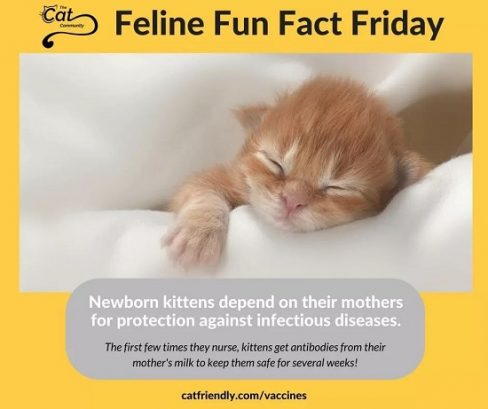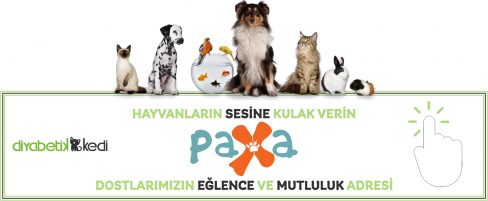Yazının tercümesi için Bkz. Coronavırus ve Fıp’e Dair Efsaneler
MYTH No. 1
FIP is NOT contagious. Coronavirus however is. We need to debunk this myth and ensure that the correct information is spread. Misinformation causes panic and unnecessary anxiety!
Positive FCoV does NOT = FIP
MYTH No. 2
A cat presenting with a swollen abdomen must have wet FIP. If the abdomen is swollen it could be as a result of bacterial peritonitis, changiohepatitis, lymphoma, trauma to just name a few.
Insist on having fluid drawn. Having it visually examined, performing a Rivaltas test and then submitting the fluid for FCoV RT-PCR
A swollen abdomen does NOT = FIP
MYTH No. 3
Myth 3 is the assumption that coronavirus can be spread via saliva and sneezing. Coronavirus is transmitted via the faecal / oral route. The virus is shed in the faeces, a cat will use a litter box with infected faecal matter and pick up the virus OR the cat that is shedding can track the virus after it has used the litter box. The cat will then go on to groom and ingest the viral particle which then enters the body. It is not transmitted by sneezing or in the saliva. Once a cat cleans itself there is a point at which the viral particle will be trapped on the tongue and in the saliva but this is ingested and not spread by the cat dispelling salivary fluids.
MYTH No. 4
Myth 4 to be dealt with is at what age a kitten is likely to present with symptoms of FIP. We have seen posts of kittens with suspected FIP at 4 weeks, 6 weeks and close to those ages.
Understanding maternal antibodies helps us understand that very young kittens are highly unlikely to have FIP. All kittens are covered by maternal antibodies till between 6 to 8 weeks of age, thereafter the kittens own immune system starts to take over. If the immune system is compromised and coronavirus infection takes place the virus can mutate to FIP and this takes at least a week to a couple of weeks.
MYTH No. 5
And possibly the most important to debunk. Weight loss and lethargy with a temperature does not dry FIP make! Seizures do not dry FIP make. Oh and while we’re at it neither does uveitis. Remember there are so many other diseases that present similar symptoms!
So let’s look at wet FIP and the fact that a swollen abdomen may be worms of a liver issue of bacterial of fungal … same goes for fluid inn the pleural cavity. These do not wet FIP make.
It is a known fact – we have verified it – that 40% of cases at least are misdiagnoses. With dry that figure spikes to 80%.
So debunk Myth 5 and push for all other possible options to be considered first
MYTH No. 6
Myth 6 – testing for wet FIP
The word indicative by definition means to be a sign of or pointing towards.
FIP, whether wet or dry, is a diagnosis that is difficult to make. A definitive diagnosis of wet FIP can only be made either post mortem through an autopsy OR by drawing off fluid and sending it for FCoV RT-PCR testing.
Many send for immunoperoxidase staining of the fluid but this is prone to give false positives. A Rivaltas test is also by no means a sure fire indicator. All it does is draw attention to the possibility of FIP. The Rivaltas test attests that the fluid is a modified transudate or exudate – it has protein in it. The cause or origin of that has to be investigated further.
Colour is characteristically yellow or straw colloured in FIP but there are some fluids that are also close in colour and consistency.
Bloodwork is only indicative. It is not a 100% guarantor of FIP. Some levels will be out but these may be exceeding the norms due to any inflammation or infection, not only FIP. Wet FIP is more subtle and difficult to diagnose when it comes to bloodwork and often what will be off the chart for dry FIP is hardly evident in the bloodwork for wet FIP
Rule of thumb when faced with a possible diagnosis of wet FIP is
Step 1 – download and go through Dr Diane Addie ‘s FIP Diagnostic Flowchart. This is the gold standard
Step 2 – evaluate the cat in terms of history and clinical signs
Step 3 – do the Rivalta’ s test. If negative then it definitely isn’t FIP as it is over 95% accurate on negative results. If positive it MAY be FIP but then the fluid has to be sent for
Step 4 – request a FCoV RT-PCR on the fluid.
Cats with wet FIP do not always exhibit the same symptoms as cats with dry FIP. Many still continue to eat with healthy appetites or are still active.
Remember euthanasia is final. No going back. Always ensure you have eliminated every possible other differential when it comes to a diagnosis. These are your babies.
MYTH No. 7
Myth 7 – testing for dry FIP
The word indicative by definition means to be a sign of or pointing towards.
FIP, whether wet or dry, is a diagnosis that is difficult to make. A definitive diagnosis of dry FIP can only be made either post mortem through an autopsy OR by biopsy of the affected organ / lymph gland and sending it for immunohistochemistry and cytology.
Bloodwork is only indicative. It is not a 100% guarantor of FIP. Some levels will be out but these may be exceeding the norms due to any inflammation or infection, not only FIP. Dry FIP is difficult to diagnose because the symptoms and indications are so similar to a number of other diseases. And this is why FIP should always be a diseases diagnosed via the elimination of all other possible differentials.
Rule of thumb when faced with a possible diagnosis of dry FIP is
Step 1 – download and go through Dr Diane Addie ‘s FIP Diagnostic Flowchart. This is the gold standard
Step 2 – evaluate the cat in terms of history and clinical signs
Step 3 – request bloodwork and this means BOTH a Blood Chemistry and Complete Blood Count (CBC)
Step 4 – if A/G ratio is pointing toward FIP then a further test known as a Serum Protein Electrophoresis can be requested
Step 5 – if possible request a FNA (fine needle aspiration) to be done to obtain a tissue sample to be sent for the relevant testing
Cats with dry FIP exhibit symptoms as lethargy, inappetance, poor condition, anemia, jaundice with low grade fever that do not respond to any medication.
Time is always of the essence. Some cats have survived long term with the administering of PI. If you can afford it and it has been identified early then this may be an option.
Remember euthanasia is final. No going back. Always ensure you have eliminated every possible other differential when it comes to a diagnosis. These are your babies.
MYTH No. 8
A snap test can show FIP.
The snap test is a tool very much like a pregnancy test. It is a test used in vet practice to quickly identify if a cat has been exposed to the coronavirus, FeLV and FIV.
And just like a pregnancy test one line shows NEGATIVE and two lines show POSITIVE.
Many of the snap tests available, and even some blood tests, name the coronavirus test as FIP test. This is INCORRECT nomenclature. There is NO blood tests that singles out FIP. There are only two strains of coronavirus that affect cats. And neither of these can be biologically differentiated in a blood test. In addition the coronavirus has to undergo a mutation before it presents as FIP.
There are many various makes of snap test available but always remember these need to then be confirmed with bloodwork. In the case of coronavirus infection the bloodwork will give a titre result, a ratio and all the indicates is if the cat has been exposed to the coronavirus. A higher titre is indicative of current infection which may be adequately fought. It does not mean the cat has FIP.
MYTH No. 9
The Elisa 7b Test = another misconception dealt with in this series on myths about coronavirus and FIP
Also called the “7B protein” test (FIPSE “FIP-specific ELISA Test?)
The Elisa 7b antibody test is a classical test, which is still marketed and used, but this test has been shown to be inaccurate. So what is the issue with this particular test? This test was developed on a faulty premise that FECVs lack the ORF 7b gene and theredore do not produce the ORF 7b protein product, while FIPVs have the ORF 7b gene, produce the protein and therefore also evoke an antibody response to the ORF 7b gene.
Let’s put that into simple terms. The 7b ELISA protein test is not useful in diagnosing FIP or predicting the development of FIP. Not all FIP virus strains have an active 7b protein and some non-FIP viruses do.
In essence, the 7b antibody test is no different than any other feline coronavirus antibody test.
MYTH No. 10
FeLV, FIV and FIP are commonly all mistaken as feline aids. An off spin of this myth is that you can use tests for FeLV and FIV to give a positive or negative test for FCoV, the acronym for coronavirus
At this point it’s important to once again note that as at this time there is NO test for FIP. The test for FCoV only tells if your cat has been exposed to coronavirus or not.
Although these three diseases can have similar symptoms and are each a viral diseases, they are very different from each other. By this alone you cannot use a test for FIV to determine FCoV.
FeLV : Feline Leukemia Virusis known as a “friendly cat” disease. Saliva is the most common way cats can spread the disease: sharing food bowls and grooming each other – hence, the term “friendly cat” disease.
FIV : Feline Immunodeficiency Virus,is known as an “aggressive cat” disease. The virus must penetrate the skin, so a bite wound is the most common way of spreading the disease.
FIP : Feline Infectious Peritonitis is very different than the first two diseases. FIP is a disease that is caused by a very common virus called coronavirus, which in some strains mutates itself into a virulent form that causes the disease FIP.
Although they are 3 distinct diseases, each one can wreak havoc on the immune system, and each can lead to serious or fatal disease. Snap tests exist for each of the major “Fs”, they cannot be used interchangeably and the one cannot be used to prove the absence of another.
MYTH No. 11
Myth 11 – kittens can contract coronavirus in the womb. This is not true. As per Dr Diane Addie – kittens are not infected in utero. They are born coronavirus (FCoV) free and are protected till 5 – 7 weeks by maternal antibodies from their moms while suckling. Unless they don’t suckle or are fostered.







